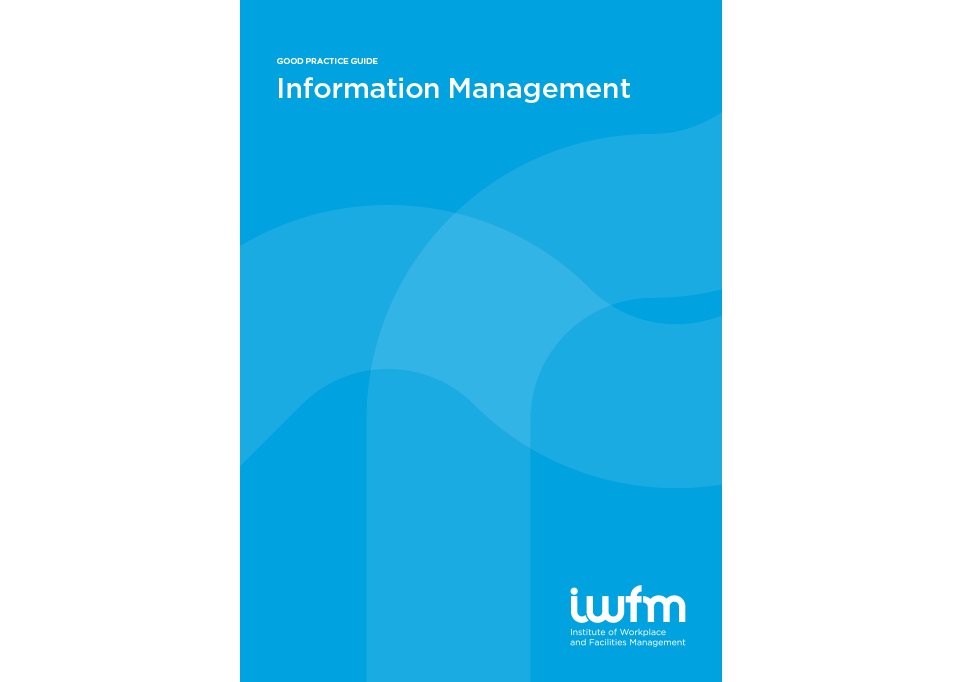Information is critical infrastructure and FM is a key player – IWFM launches new Information Management good practice guide
News
- Technology
10 November 2025

IWFM’s latest good practice guide provides a transformative framework for how workplace and facilities management (WFM) professionals approach information management – it represents a crucial opportunity for the profession.
The Information Management guide positions information as critical infrastructure – essential not only for compliance and operational efficiency but also for strategic assurance, ESG performance and organisational resilience. The guide is authored by Gordon Mitchell, one of the UK’s best known experts on technology in WFM, and Chair of the IWFM Technology Special Interest Group. Developed with input from leading experts and peer reviewers across the sector, the guide introduces the Five-Layer Model, a practical tool for embedding structured, trustworthy and outcome-focused information practices. The guide also sits within a wider movement across the built environment sector – The Information Management Initiative (IMI), led by nima.
Responding to sector-wide challenges
The guide arrives at a pivotal moment for the profession. WFM is facing mounting pressures – from regulatory reform and net zero commitments to digital disruption and shifting workforce expectations. These forces have exposed a persistent ‘value gap’: the mismatch between the information organisations have and what stakeholders need.
IWFM’s new guide addresses this gap head-on. It provides actionable strategies for aligning people, processes, data, technology and organisational context, helping professionals move from reactive service delivery to proactive, insight-driven leadership and increasing the value of workplace and facilities management itself.
A whole-business approach to information
One of the guide’s central messages is that information management is not just a leadership concern – it’s a whole-business activity. Everyone in an organisation has a role to play, with WFM professionals at the hub. The Five-Layer Model reflects this, integrating:
- People – clarity of roles and responsibilities
- Process – consistent workflows and structured handovers
- Data – trustworthy, interoperable information
- Technology – systems that support rather than constrain
- Context – alignment with ESG, regulatory and strategic goals
IWFM’s Director of External Affairs, Insight and Impact, Jenny Thomas, said:
‘Too often, critical information is generated long before handover to WFM teams, yet its structure defines operational performance for decades. Early decisions ripple into bigger effects and costs down the line.
‘IWFM’s lifecycle-spanning guide is an essential tool for aligning people, processes and data across silos, creating a continuous thread of value.
‘It is so much more than a technical reference. It empowers professionals to lead change, demonstrate value and build workplaces that are resilient and sustainable. It’s a future proof call to action - a roadmap to WFM’s future value.’
Tailored for diverse audiences
The guide is designed to support a range of stakeholders, including WFM professionals, asset owners, service providers, investors, insurers, policymakers and regulators. Each group will find practical insights and tools to strengthen their information practices and deliver measurable outcomes.
Strategic leaders are encouraged to embed the guide’s principles into ESG and compliance strategies, while operational professionals can use it to improve service delivery and reduce risk. Corporate members and supply chain partners will benefit from consistent standards and clearer client expectations.
Driving engagement and adoption
IWFM members can download the guide for free, while non-members can access it for £19.99.
We also invite feedback and case studies from professionals applying the guide in practice, with plans for follow-up content to showcase its impact across the sector.
Download the guide today
To download the guide, explore its tools and learn how to apply the Five-Layer Model in your organisation, click here.
